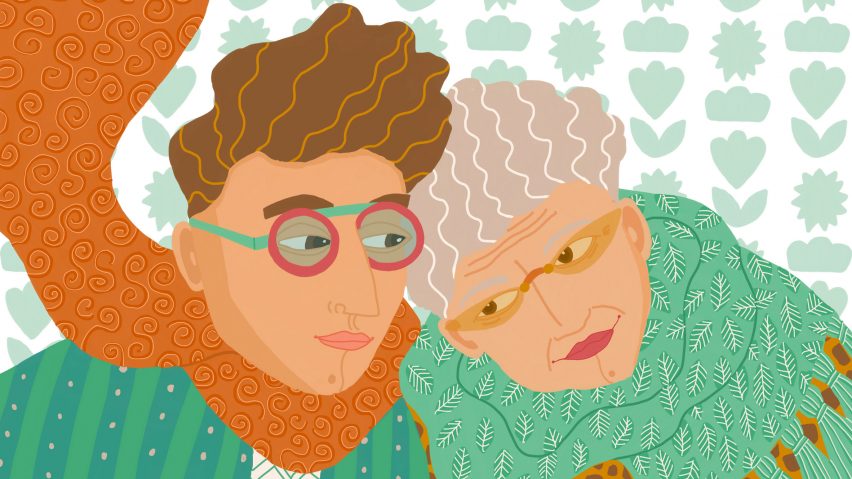
Creatives share what they're grateful for during the pandemic in 100 Days of Gratitude
Designers and architects including Arthur Mamou-Mani and Adam Nathaniel Furman have shared what they're grateful for as part of 100 Days of Gratitude, an ongoing portrait series illustrator Justyna Green started in response to the Covid-19 pandemic.
The London-based illustrator began drawings for the series 100 Days of Gratitude as Covid-19 restrictions began loosening around the world.
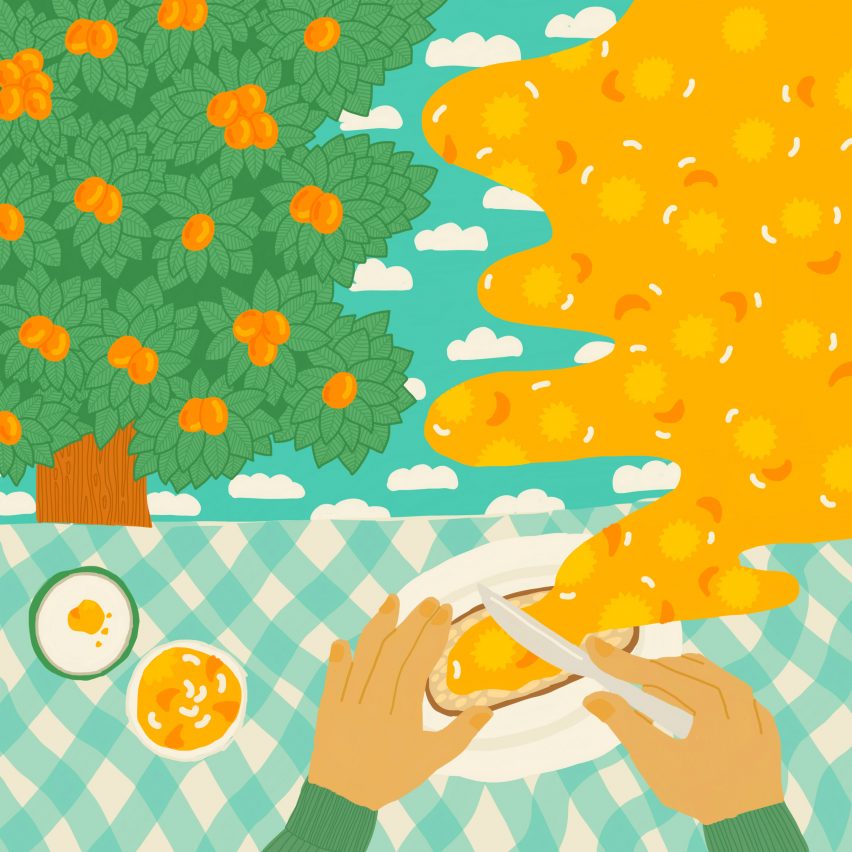
Green collects stories from across the world that embody the theme of gratitude through an open call on her Instagram and website.
Over the course of three months, the illustrator will draw one portrait a day, creating a compilation of colourful portraits around the theme.
"100 Days of Gratitude is born from the idea that even in the toughest life situations, there's always something to be grateful for," Green told Dezeen.
"Covid has surprised all of us and presented many challenges, so I wanted something that would bring the creative community together around a positive and universal idea."
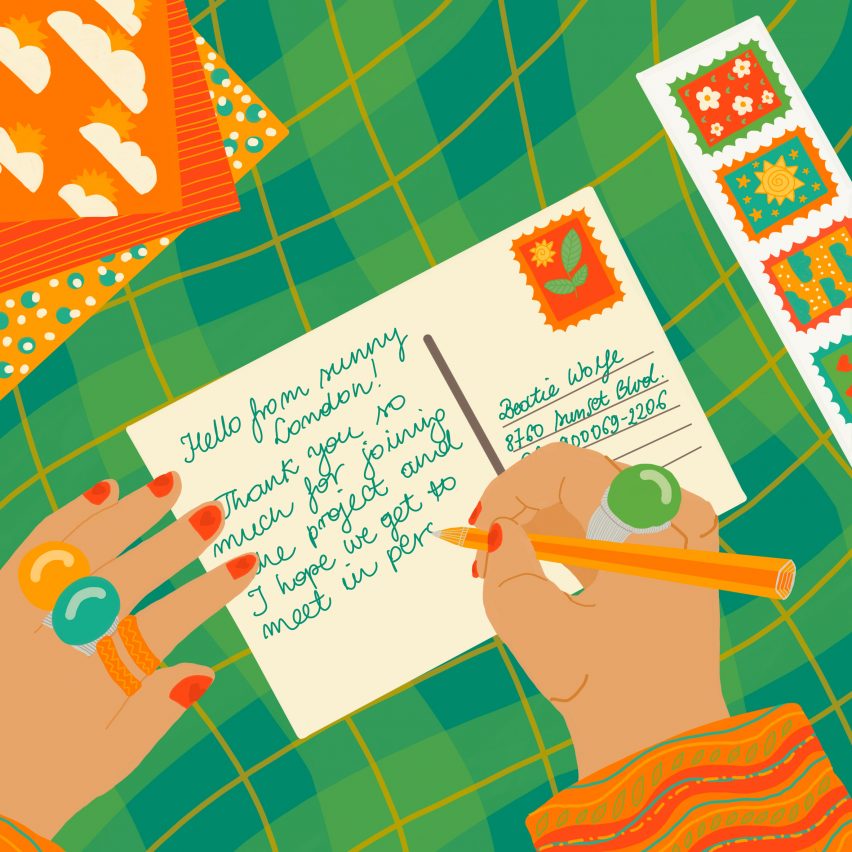
"We're starting to see the light at the end of the tunnel in terms of the pandemic and I wanted to support creatives who, like everyone else, have been under pressure and subjected to prolonged periods of uncertainty," she added.
"With lockdown easing, it felt like the right time to amplify now that the worst seems to be behind us."
Her use of vibrant block colours and softly rounded lines emphasise the "feelings of hope and positivity" associated with the return to normal life.
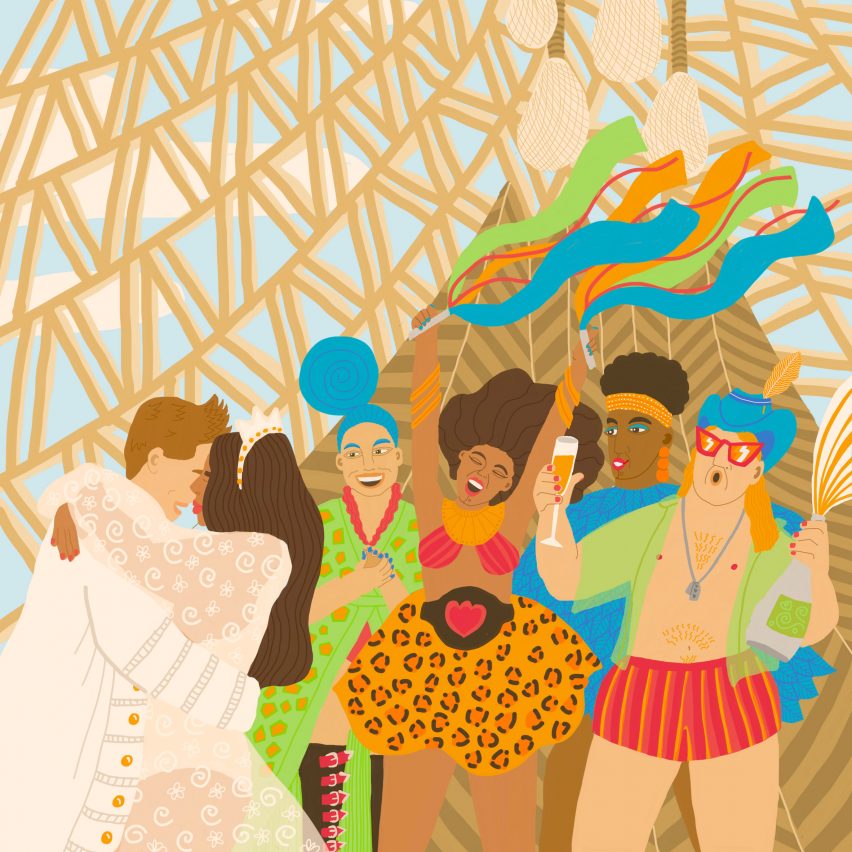
Among the illustrator's favourite submissions is French architect Arthur Mamou-Mani's wedding at Burning Man. The award-winning architect wanted the illustration to include his Galaxia Temple and the bustling crowds found at the festival.
Green also enjoyed working on the designer Adam Nathaniel Furman's portrait of his grandmother holding him in an embrace. In this image, Furman wanted to capture how his grandmother inspired his aesthetic over the years.
Dezeen's founder and editor-in-chief Marcus Fairs shared his new pandemic ritual of eating toast with apricot jam each morning before starting work.

Green realised quickly after launching the project that many of the submissions featured recurring motifs of small rituals such as making coffee and creative activities including pottery.
"Sometimes it takes challenging situations to see the wonderful things right in front of us that we previously might have taken for granted," she explained.
For lots of creatives who have submitted their stories to the project so far, simple activities provided a "comforting focus", and something familiar to continue practising at a time when much else was uncertain.
"These activities have been a life-saver for many of us, and a great way of focusing our attention on something positive. Lockdown gave many of us more time at home, which people took advantage of to work on their creativity and passion projects," she continued.
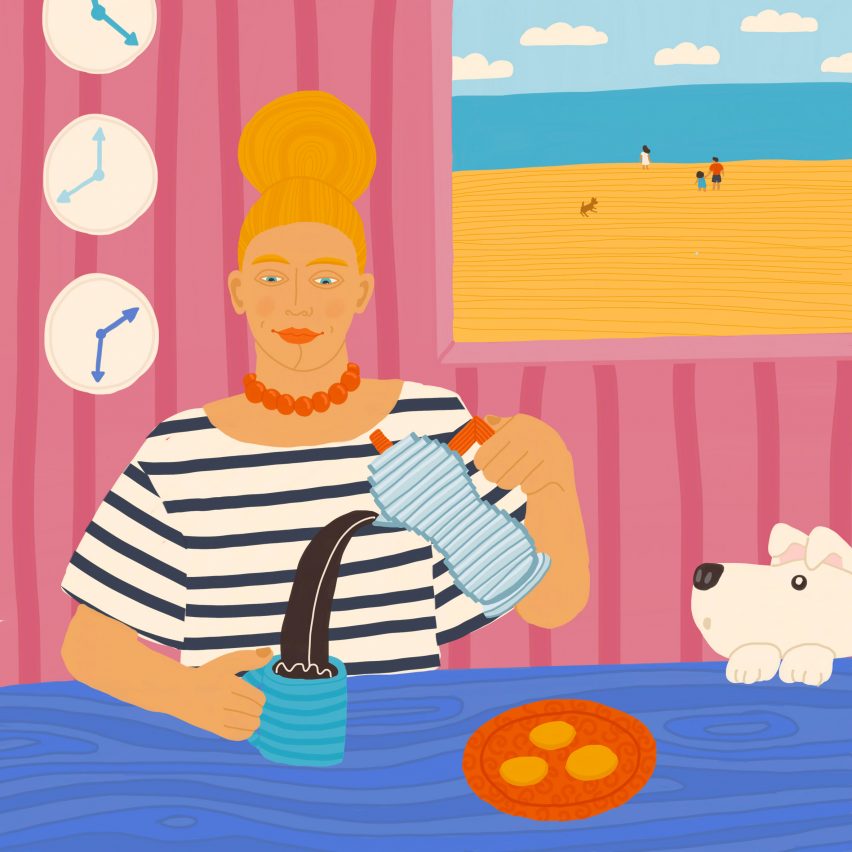
Nature and pets have also come up time and time again. According to the illustrator, this is because the pandemic prompted people to re-evaluate their relationships with their surroundings.
"Lockdown has reminded us about the importance of nature and has given us opportunities to reconnect, because when everything else shut down, we could still get outside and find some peace in the great outdoors."
"These relationships seemed to take on a new poignancy during lockdown, with many of the participants expressing a deep gratitude for their beloved cats and dogs."
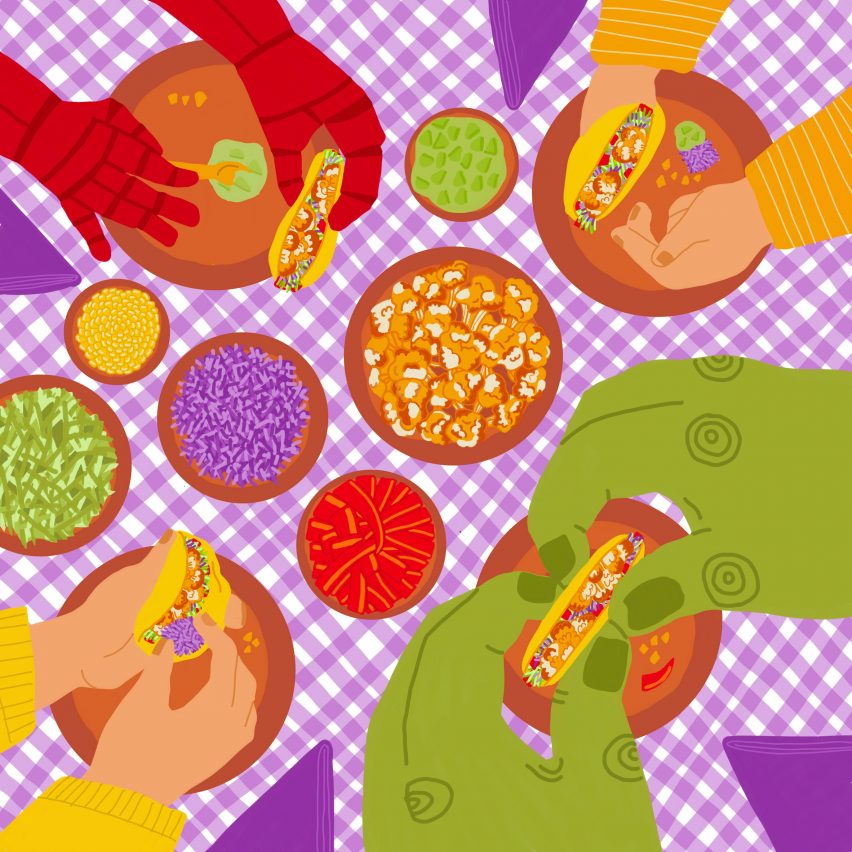
Green hopes that 100 Days of Gratitude will be an "antidote" to the mainstream Covid-19 pandemic news coverage.
"Having awareness of and celebrating the things in our daily lives that we are grateful for serves as a welcome antidote to the mainstream news agenda," said Green
"As the project submissions came in from across the world, it quickly being apparent that we have a lot in common and that we might not be as divided and fearful as the news would have us believe," she added.
"I wanted this project to put a smile on people's faces, to ease their sorrows and create moments of grateful reflection."
Elsewhere, Italian designers Francesca Perani and Claudia Manenti illustrated 488 scale figures for use in architectural renderings, while Agustín Ferrer Casas created a graphic novel with illustrations of the 20th-century modernist Ludwig Mies van der Rohe.